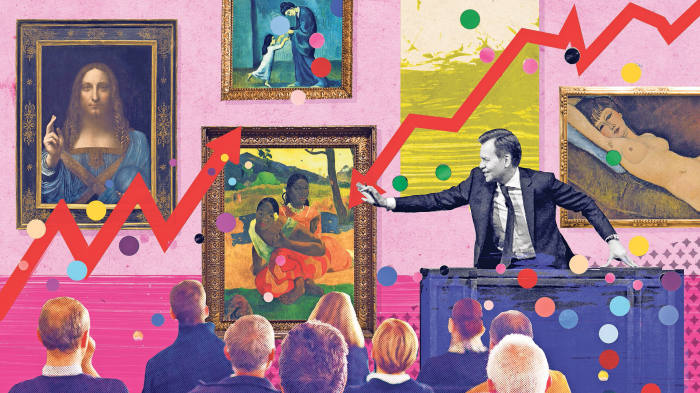New Art History Courses for Winter 2020
AH 3560: Special Topics
Art and Architecture of Detroit, Tues. 2:30-5
This seminar course offers an examination of the interrelationship of art, community and commerce specific to the city of Detroit. Students will survey important monuments, works of art and architecture in the city, in order to understand the significance of those relationships. The historical and cultural moment in which artists lived and worked, including patrons who commissioned the work and the intended audience for it will inform this analysis. Also important to this discussion is investigation into the recent economic challenges the city faced and their effect on the status of the Detroit Institute of Arts collection, as well as to artists working and living in the city. We will also explore the landscape of Detroit and its unique visual culture.
 AH 5560: Special Topics
AH 5560: Special Topics
A History of the Art Market, Online course
This course traces the historical evolution of the international art market from early modern Europe through to the present day. It covers topics such as early international networks of dealers and artists in 15th century Florence, the first wave of globalization in 16th century Antwerp, the emergence of middle class art collecting in 17th century Netherlands, the rise of the European auction houses in the 18th century, the birth of the art star in 19th century Paris, and the dominance of the Avant-garde in the 20th century transatlantic context. All of these topics will be studied from the perspective of understanding the historical forms that shaped the customs, conventions, and institutions that structure the global contemporary art market.
Photo: illustration commissioned by the Financial Times, Michelle Thompson
 AH 3560/5560: Special Topics
AH 3560/5560: Special Topics
Visual Cultures of the Modern Middle East, Tues./Thurs. 4-5:15 pm
This course examines visual cultures in the modern Middle East through their political and social contexts. Starting with Roland Barthes, W. J. T. Mitchell, and practices of looking across media and cultures, the course proceeds through a series of thematic case studies of images and formative political events. We will examine how images and communication technologies both facilitate and document sociopolitical transformations in the specific context of the Middle East, from photography in the 1905 Iranian Constitutional Revolution, Turkish political cartoons during Ataturk's secularist reforms, Saddam Hussein's cult of personality and public monuments, to ISIS's hyper-visual propaganda and iconoclasm through global media. By addressing a broad range of materials, including cartoons, poster arts, government propaganda, and protest art, students will gain tools to think critically about visuality by engaging with the visual materials that helped to shape contemporary Middle Eastern art and society. Course readings and discussions will address issues of nationalism, gender, race, and violence as they relate to visual production in the Middle East. Questions we will consider throughout the term include: What is the rhetoric of an image? How can visual culture serve as an analytical tool for study across different disciplines and cultural fields? What does the Middle East teach us about the politics of visual expression? Through such queries, we will critically consider visual culture and its political practices and dynamics in recording and producing history of the modern Middle East.